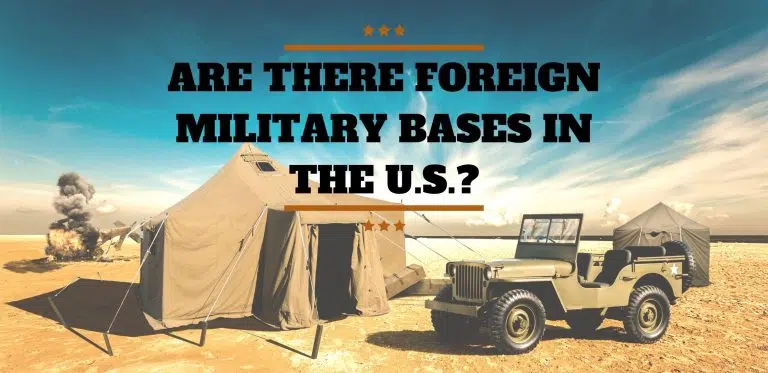What You Need to Know About the US Military Draft: Key Insights and Facts
Important Note: When you buy through our links, we may earn a commission. As an Amazon Associate we earn from qualifying purchases. Content, pricing, offers and availability are subject to change at any time - more info.
In recent years, concerns over global security and national defense have led to increasing discussions about the potential reinstatement of the US military draft. For many young Americans, understanding the implications and history of the draft is an essential step in developing informed opinions on this contentious topic.
As of 3/20/2023 there is no nationwide selective service, also known as “the draft”. For draft age information and more continue reading.
The United States has employed a military draft, or conscription, at various points in its history, most recently during the Vietnam War. Conscription is a practice in which eligible citizens are required to serve in their nation’s military for a specified period of time. While the US currently maintains an all-volunteer force, it is important for individuals to be aware of the possibility of a future draft and the considerations that would come with such a decision.
This article aims to provide an overview of the US military draft, its history, and the factors that could lead to its reimplementation. Furthermore, it will discuss the implications of such a decision on the nation’s youth, military readiness, and overall national security. By understanding the various aspects of the draft and its potential implications, readers can form their own viewpoints and engage in informed discussions about the future of the US military.
History of the US Military Draft
The United States military draft, also known as conscription or selective service, has its roots in early American history. The first draft occurred during the American Revolutionary War, when individual colonies called for able-bodied men to enlist in the colonial militias.
During the Civil War, both the Union and Confederate states instituted national drafts. The Union draft of 1863 faced widespread opposition and sparked draft riots in several major cities, including New York City. The Confederate draft began in 1862 and led to tensions between regions and social classes.
In the 20th century, the US implemented the draft during both World Wars. The Selective Service Act was passed in 1917, leading to the creation of the Selective Service System, which administered the WWI draft. In WWII, the government expanded the draft to include all able men between the ages of 18 and 64.
During the Korean War, the draft was reactivated, and it continued into the Vietnam War. Opposition to the Vietnam War draft led to protests and efforts to avoid service, such as moving to Canada or seeking deferments. The draft ended in 1973, and the US military transitioned to an all-volunteer force.
Today, the Selective Service System remains a contingency plan in case of a national emergency or manpower shortfall. Men between the ages of 18 and 25 are required to register, but no active draft is currently in place.
How the Draft Works
The US Military Draft, officially known as the Selective Service System, is a method by which the United States government can conscript eligible citizens for mandatory military service. To better understand this process, let’s break it down step by step.
1. Registration: All male US citizens and male immigrants residing in the US, aged 18 through 25, are required to register with the Selective Service System. This registration can be done online, by mail or at a post office. Those who fail to register could face penalties, such as loss of access to certain benefits.
2. Random Lottery: In the event of a draft, the Selective Service System would randomly select individuals for service using a lottery system. This lottery is based on the registrant’s birth date, which is drawn and assigned a number, effectively determining the order in which they may be called upon.
3. Classification Process: Once selected, the potential draftees would undergo a classification process to determine their eligibility for military service. This process involves physical, mental, and moral evaluations, as well as consideration for deferments or exemptions.
- Physical Exam: Potential draftees are required to pass a physical examination to ensure they are fit for military service.
- Mental Exam: Individuals must also take the Armed Services Vocational Aptitude Battery (ASVAB) test to assess their mental aptitude and potential military occupation.
- Moral Evaluation: Background checks and interviews will be conducted to determine if there are any moral disqualifications for service, such as a criminal history.
- Deferments and Exemptions: In some cases, potential draftees may be considered for deferments (temporary postponements) or exemptions (permanent exclusions) from service due to factors like higher education, family responsibilities, medical conditions, or religious beliefs.
4. Induction: If deemed eligible and not granted deferments or exemptions, the individual would be inducted into military service and assigned to a branch of the armed forces for training and deployment.
Selective Service System
The Selective Service System (SSS) is a government agency responsible for maintaining information on individuals who may be potentially subject to military conscription. The main purpose of the SSS is to ensure that the United States is prepared to respond quickly and efficiently in the event of a national emergency requiring a rapid expansion of its military forces.
All male US citizens and non-citizen residents between the ages of 18 and 25 are required to register with the Selective Service System. This includes individuals living abroad, as well as dual citizens. It’s important to note that while registration is mandatory for this age group, being registered does not necessarily mean that an individual will be drafted into the military.
To register for the Selective Service, individuals can do so online at the SSS website or by visiting a post office to complete a paper form. Once registered, individuals will receive a Selective Service number, which they should keep for their records. Failure to register can result in penalties such as being denied federal financial aid for education, federal job opportunities, and even naturalization for non-citizens.
The Selective Service System maintains a list of eligible individuals in case of a draft. Should a military draft be enacted, the process for selecting individuals is as follows:
- A lottery system is used to randomly determine an order for selecting eligible individuals within a birth year.
- Selected individuals are classified based on their ability to serve in the military, taking into account factors such as physical and mental health, as well as moral or religious beliefs.
- Those selected will then undergo further evaluations and examinations before being inducted into military service.
It’s important to remember that the draft has not been in effect since 1973, and the current all-volunteer military system has been effective in meeting the needs of the US Armed Forces. However, the Selective Service System remains in place as a contingency plan should circumstances change.
Draft Eligibility and Requirements
The US Military Draft, also known as the Selective Service System, has specific eligibility and requirements for individuals who may be subject to being drafted. Understanding these requirements can provide valuable insight into the draft process.
According to the Selective Service System, virtually all male US citizens and male immigrants residing in the United States, aged between 18 and 25, are required to register for the draft. These include:
- US citizens (including dual citizens)
- Permanent residents (green card holders)
- Refugees, asylees, and parolees
- Undocumented immigrants
- Military dependents
However, there are exemptions and deferments from the military draft, which include:
| Exemption or Deferment | Description |
|---|---|
| Full-time students | May be eligible for deferment until the end of their current semester, or academic year for high school students. |
| Dependents | Individuals who have dependents may be eligible for deferment if their enlistment would cause undue hardship to their dependents. |
| Medical Issues | Those with certain physical, mental, or moral unfitness may be exempt from the draft. |
| Religious Ministers | Religious ministers and students studying to become religious ministers may qualify for a deferment. |
| Conscientious Objection | Individuals may apply for conscientious objector status if their beliefs prohibit them from participating in combat or other forms of military service. |
In the event of a draft, the selection process would begin with a random lottery based on birth dates. Once chosen, individuals would receive an order to report for induction, at which point they may apply for exemptions or deferments if they meet the necessary criteria.
Exemptions and Deferments
In the event of a US military draft, certain individuals may be eligible for exemptions or deferments. Understanding these categories can help potential draftees better prepare for their situation.
Exemptions are granted to individuals who are not required to register with the Selective Service or to serve in the military. They include:
- Women: Under current law, women are not required to register for the draft.
- Men over the age of 26: Men are only required to register for the draft between the ages of 18 and 25.
- Non-citizens: Some non-citizens residing in the US are not required to register, depending on their immigration status.
- Disabled individuals: Those with a qualifying disability that prevents them from serving in the military are exempted.
Deferments temporarily postpone a draftee’s induction into military service for a specific period. Deferments can be granted for various reasons, such as:
| Reason | Description |
|---|---|
| Education | High school students may be deferred until they graduate or reach age 20, whichever comes first. College students may be deferred until the end of the semester or academic year. |
| Family Situation | Those responsible for the support of dependents may be eligible for a deferment. |
| Occupational | Individuals employed in a position deemed critical to national defense or other essential civilian occupations may be granted a deferment. |
| Religious or Moral Objectors | Those who can demonstrate a sincere and deeply held belief against participation in war may be granted a deferment as conscientious objectors. |
Potential Reinstatement of the Draft
Though the US military has relied on an all-volunteer force since the end of the draft in 1973, the possibility of reinstating the draft remains a topic of debate. Factors that could contribute to the reimplementation of the draft include:
Increased global tensions or large-scale conflicts: A significant increase in global threats or the outbreak of a major conflict could necessitate a rapid expansion of the US military, potentially leading to the reinstatement of the draft.
Insufficient recruitment for the all-volunteer force: If the all-volunteer force struggles to meet its recruitment goals, the draft could be considered as a means to bolster military ranks.
National emergencies or disasters: In the event of a national emergency or disaster, such as a large-scale terrorist attack or natural catastrophe, the draft could be reinstated to ensure adequate military personnel are available to respond.
Changes in political leadership or policy: Shifts in political leadership or policy priorities could lead to a renewed focus on national security and military preparedness, possibly resulting in the reinstatement of the draft.
Implications of a Reinstated Draft
The reinstatement of the US military draft would have numerous implications for the nation’s youth, military preparedness, and overall national security. Some of these implications include:
Impact on young Americans: A reinstated draft would directly affect young Americans, as they would be subject to potential mandatory military service. This could disrupt educational and career plans, as well as personal and family life.
Military readiness: With the inclusion of draftees, the US military could potentially increase its overall personnel numbers, potentially improving military readiness. However, there is also the possibility that the influx of conscripts could strain resources, training programs, and unit cohesion.
National security: A larger military force could improve the nation’s ability to respond to security threats and conflicts, but reinstating the draft could also lead to public opposition, protests, and divisions within society, potentially impacting national unity and morale.
Equality and fairness: The draft could raise concerns about fairness and equality, particularly if certain groups are disproportionately affected by conscription, or if exemptions and deferments are granted unevenly.
In conclusion, the potential reinstatement of the US military draft is a complex and multifaceted issue with significant implications for the nation’s youth, military readiness, and national security. By understanding the history and mechanics of the draft, as well as the factors that could lead to its reimplementation and the implications of such a decision, individuals can form well-informed opinions and engage in productive discussions about the future of the US military.






